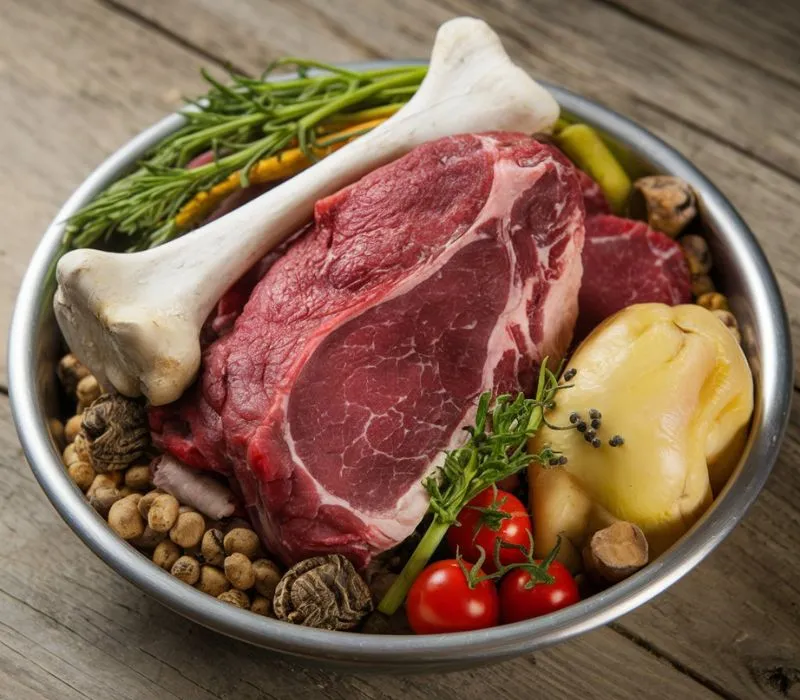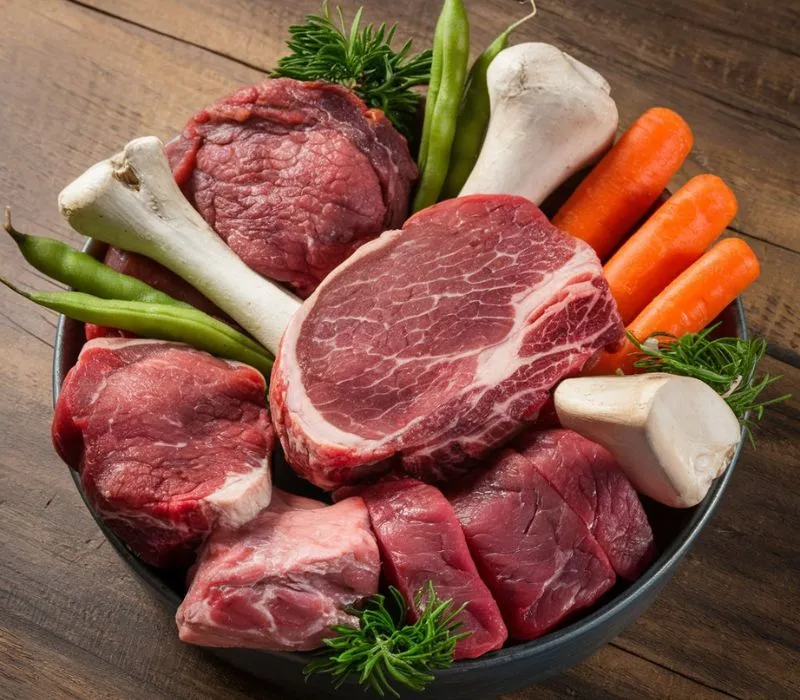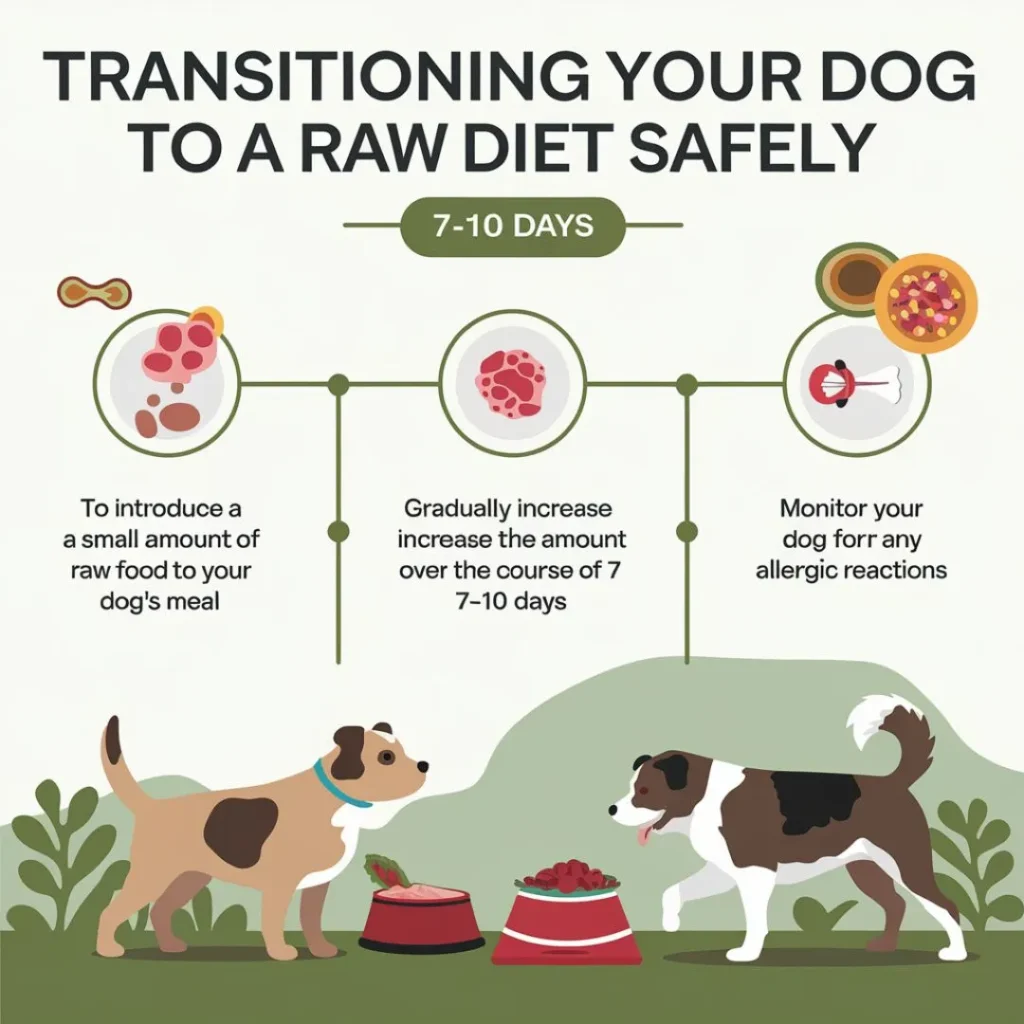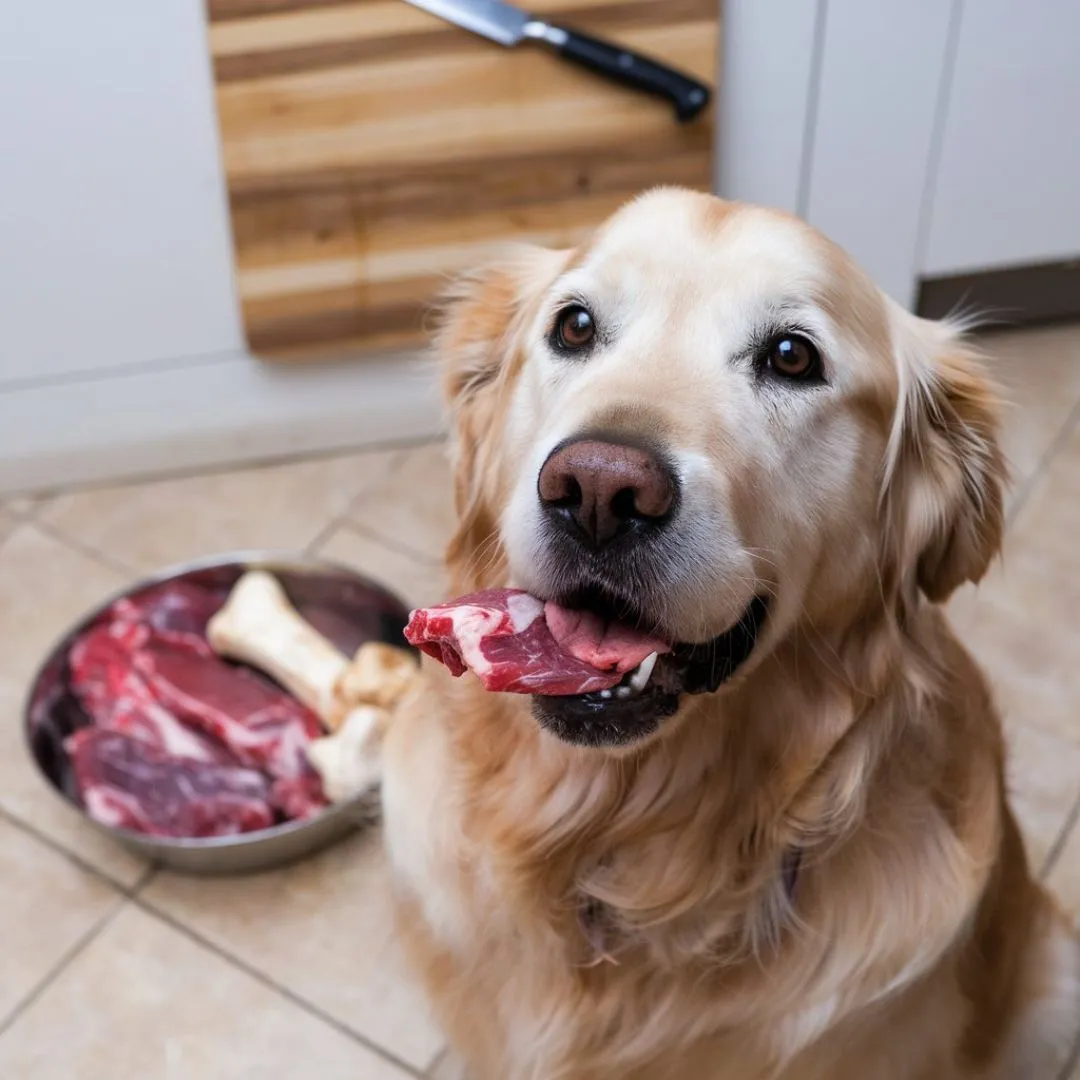Raw dog food may help reduce allergies in dogs, especially if the allergies are caused by grains or processed ingredients. However, some dogs may develop allergies to certain proteins in raw diets. Please consult your veterinarian to ensure it’s appropriate for your pet’s needs and to avoid risks.
Introduction
Does your dog seem to be constantly scratching, dealing with irritated dry skin allergies, or struggling with digestive problems? Raw dog Food allergies could be the root cause. Many pet owners are turning to raw dog food as a natural way to ease their dogs’ allergies, believing that an elimination diet of grains and artificial ingredients can make a big difference. But is it the right choice for every pup?
In this guide, does raw dog food help with allergies we’ll break down the benefits, risks, and best safe raw food practices to help you make the best decision for your furry friend. Let’s dive in!
1. Understanding Dog Allergies

Why Dogs Develop Food Allergies
Just like humans, dogs can develop allergies when their canine immune system overreacts to certain substances. These allergies typically fall into three categories:
- Food allergies in dogs – triggered by specific ingredients.
- Environmental allergies – [Does Raw Dog food cause allergies] are caused by pollen, dust mites, mold, and other external factors.
- Flea allergies – reactions to flea bites and saliva.
Food allergies are particularly frustrating because they often lead to chronic itching, skin inflammation, ear infections, and digestive issues.
Common Detox Symptoms of Allergies in Dogs
If your dog has allergies, you may notice:
- Persistent scratching and itching
- Red, irritated skin or rashes
- Chronic ear infections
- Digestive problems like diarrhea or vomiting
- Excessive licking of paws
- Hair loss or a dull coat
How Diet Affects Allergies
Certain ingredients—like grains, artificial additives, and even common proteins like chicken or beef—can trigger food allergies in dogs. That’s why many pet owners are switching to raw dog food for allergies, which eliminates these potential allergens and provides a more natural, minimally processed diet.
2. Raw Dog Food and Allergies
What Is Raw Dog Food?

A raw diet for dogs consists of uncooked meats, bones, raw organs, and vegetables, designed to mimic what dogs would eat in the wild. There are two main types:
- Commercial raw diets – Pre-packaged raw meals sold by pet food brands.
- Homemade raw diets – Meals prepared by pet owners using fresh ingredients.
Can Raw Dog Food Reduce Allergies?

Raw diets remove the heavily processed ingredients and artificial additives that often cause allergic reactions. Here’s how raw food may help:[Does Raw Dog Food Help with Allergies]
- Grain-free dog food nutrition – Eliminates wheat, corn, and soy, which are common allergens.
- Higher-quality protein sources – Reduces exposure to over-processed meat byproducts.
- Essential fatty acids – Support healthy skin and reduce inflammation.
- Better digestion – Aids gut health, which plays a key role in immune response function.
Potential Risks of Raw Dog Food for Allergies
While raw food can be beneficial, it’s not a one-size-fits-all solution. Risks include:
- New protein allergies – Some dogs may still develop sensitivities to raw meats.
- Infection from bacteria – A Raw meat diet may contain harmful bacteria such as Salmonella.
- Pet Nutritionist imbalances – An improperly formulated raw diet can lead to deficiencies.
3. Best Practices for Transitioning Dog Allergies Raw Food Diet

How to Safely Introduce a Raw Diet for Dogs
- Gradually transition over 7–10 days to avoid digestive upset.
- Monitor your dog closely for any improvement or worsening of allergy symptoms through food.
Choosing the Right Ingredients
- Opt for choosing novel protein sources – Lamb, venison, rabbit, or duck are great alternatives.
- Common Foods to Avoid in Allergic Dogs – If your dog reacts to chicken, beef, or dairy, eliminate them from their diet.
- Include supplements – Omega-3 fatty acids and probiotics can support immune health.
Signs Raw diet is working
- Less itching and skin irritation
- Improving coat with raw food digestion and fewer sensitive stomach issues
- Shinier, healthier coat
- More energy and vitality
4. Raw Dog Food Allergies vs. Other Allergy-Friendly Diets
Comparing Raw Diets to Hypoallergenic Dog Food
- Raw diet – Natural dog food, protein-rich, and free from artificial additives, but requires careful preparation.
- Hypoallergenic processed kibble – Specially formulated for dogs with food sensitivities, but still processed.
Homemade Dog Food Raw Diets vs. Commercial Allergy Diets
- Homemade dog food raw diets – Gives you full control over ingredients, but requires knowledge of canine pet nutrition.
- Commercial dog food raw Diets – Balanced and convenient, but can be expensive.
Real-Life Experiences and Case Studies
[Does Raw Diet Help Dogs with Allergies?]Many dog owners have reported major improvements in their pets’ allergies after switching to raw food for allergies. Testimonials suggest shinier coats, reduced itching, better digestion, and an overall happier pup. However, not every dog responds the same way, so results can vary.
Conclusion of Does Raw Dog Food Help with Allergies
A raw dog food diet may help reduce allergies, especially if your dog struggles with grains or processed ingredients. However, some dogs can still develop sensitivities to raw proteins, so careful ingredient selection is key.
Always consult a veterinarian before switching to raw food to ensure it meets your pet’s specific nutritional needs. With the right approach, a raw diet could be the answer to your dog’s allergy problems, helping them lead a healthier, happier life.
Frequently Asked Questions (FAQs) of Does Raw Diet Help Dogs with Allergies?
Q1.Does raw dog food help with allergies?
Ans. Yes, raw dog food may help reduce allergies in dogs, especially if grains, artificial additives, or processed ingredients are the allergy triggers. It provides a natural, nutrient-rich diet that supports skin allergies and gut health. However, some dogs may still develop allergies to specific raw proteins, so it’s essential to monitor their reaction and consult a vet.
Q2.What are the best proteins for allergic dogs?
Ans. If your dog has food allergies, try novel protein sources like venison, duck, rabbit, or lamb, which are less likely to cause reactions. Avoid common allergens like chicken and beef if your dog has a sensitivity. Always introduce new proteins gradually.
Q3.How do I safely transition my dog to a raw diet?
Ans. Switch gradually over 7–10 days, mixing raw food with their current diet and increasing the raw portion daily. Watch for any digestion issues or allergic reactions. Start with a single protein source and ensure a balanced raw diet mix of meat, raw bones, and raw organs. Consulting a vet for a customized raw diet is always recommended.
Q4.Are there any risks to raw feeding dog food?
Ans. Yes, risks include bacterial contamination (Salmonella, E. coli), nutritional imbalances, and new protein allergies. To reduce risks, choose high-quality ingredients, practice raw food handling, and consider commercial raw diets that meet nutritional guidelines. Proper veterinary dermatology guidance is crucial.
Q5.What signs indicate that raw food is improving my dog’s allergies?
Ans. If raw dog food helps with allergies, you’ll notice improvements like less itching, fewer ear infections, healthier skin and coat, better digestion, and increased energy levels. Positive changes typically occur within a few weeks to months. If allergy symptoms persist or worsen, consult a vet to reassess your dog’s diet.

